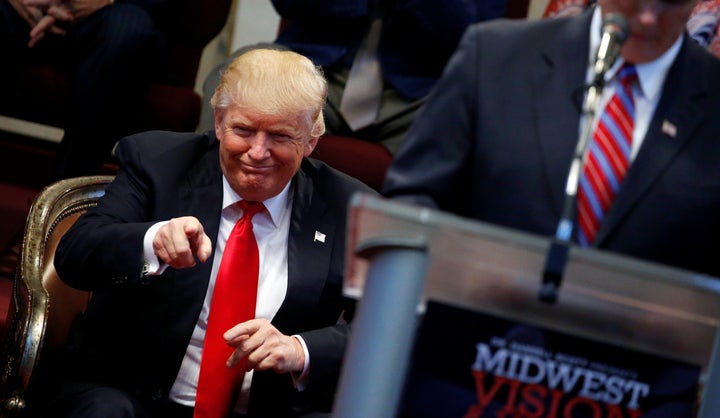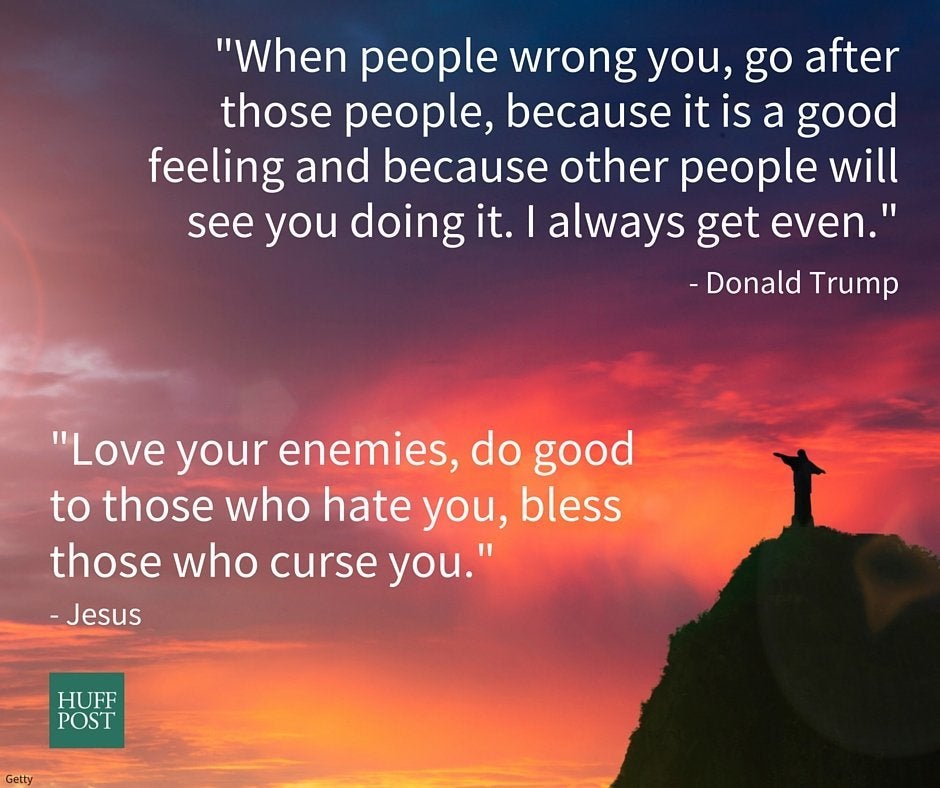
Donald Trump wants to ramp up the use of stop-and-frisk policing, an aggressive approach whereby officers will seize, question and sometimes search civilians they deem suspicious.
The Republican presidential candidate said on Wednesday this would reduce violence in black communities. “I see what’s going on here,” he assured the crowd at a suburban Cleveland church. “I would do stop-and-frisk. I think you have to... You have to be proactive.”
But that type of policing would not be new for black residents of Cleveland. Indeed, the most consequential stop-and-frisk in U.S. legal history ― the one the Supreme Court used to judge whether the practice was constitutional ― took place just down the road from where Trump was speaking.
It was October 1963, midday on a busy commercial block in downtown Cleveland. Detective Martin McFadden observed two black men strolling up and down the street, he said, each time stopping briefly to look into a store window.
A white man paused to talk to them at one point, then walked away, then reappeared about 10 minutes later to chat again. McFadden was suspicious. He believed the men were casing the store for a stickup.
He approached the group, identified himself as a police officer, then grabbed one of the black men, John Terry, and frisked him. He found a gun in his coat and arrested all three men. Terry was charged with carrying a concealed weapon.
Attorney Louis Stokes, who would later become Ohio’s first black congressman, took on Terry’s case. In his autobiography, Stokes recalled:
I had been stopped myself going to a Boy Scout meeting when I was thirteen or fourteen. Police had gotten out of a squad car and stopped and questioned me. What was I doing here? Where was I going? Where was I coming from? Then, “All right, get on down the street,” brusquely, angrily.
This was the treatment many black men experienced, an ongoing humiliation and violation of rights. Now, in this case the police happened to find a gun. But what about the thousands or tens of thousands or hundreds of thousands of times people were stopped and there were no guns or illegal contraband? The case I had in hand here had the potential to strike at a problem that existed on the streets of every major American city. If I could establish a ruling on this in Cleveland, it was going to affect the stopping and frisking of black men all over the country.
Stokes’ argument was simple: The Fourth Amendment requires probable cause to arrest someone, and suspicion is not probable cause. Detective McFadden had no cause to seize Terry in the first place since he hadn’t observed Terry committing a crime. Thus, the gun he’d found was the product of an illegal search.
During the trial, Stokes questioned the nature of the detective’s suspicion. The men were on a busy street in broad daylight, after all, so a robbery would be unlikely. And McFadden acknowledged he couldn’t remember ever arresting someone on suspicion of a stickup in his 39-year career.
“At what point did you consider their actions unusual?” Stokes asked.
“Well, to be truthful with you, I didn’t like them,” the detective replied.
Stokes later pressed, “The three of them were just standing there talking?”
“That’s right,” the detective said.
And did he have any information that might have suggested to him that they were criminals?
“I had no information whatsoever,” McFadden said.
“The case I had in hand here had the potential to strike at a problem that existed on the streets of every major American city. If I could establish a ruling on this in Cleveland, it was going to affect the stopping and frisking of black men all over the country.”
- Louis Stokes, discussing Terry v. Ohio
The case, Terry v. Ohio, reached the Supreme Court in 1967. The majority ruled against Terry, 8-1. Their decision is a landmark. It has since governed “more non-consensual police interactions with citizens than any other decision by the Supreme Court,” according to one analysis.
The court did agree with Stokes that a “stop-and-frisk” is no different than a search and seizure. “It is a serious intrusion upon the sanctity of the person, which may inflict great indignity and arouse strong resentment,” Chief Justice Earl Warren wrote.
The majority also acknowledged that stop-and-frisk policing posed a threat to communities of color. Their opinion referenced a 1967 report commissioned by President Lyndon Johnson which found that, “[i]n many communities, field interrogations are a major source of friction between the police and minority groups,” and that “[m]isuse of field interrogations” increases as more police departments adopt “aggressive patrol.”
Yet their ruling ultimately carved out an exception to the Fourth Amendment. The case established that police officers need merely a reasonable suspicion, not probable cause, in order to stop someone. Moreover, the court ruled, officers may search someone they reasonably suspect to be armed and dangerous.
And what of the lone dissenter, Justice William Douglas? It’s not often that a Supreme Court opinion raises the specter of totalitarianism. He wrote:
To give the police greater power than a magistrate is to take a long step down the totalitarian path. Perhaps such a step is desirable to cope with modern forms of lawlessness. But if it is taken, it should be the deliberate choice of the people through a constitutional amendment. [...]
There have been powerful hydraulic pressures throughout our history that bear heavily on the Court to water down constitutional guarantees and give the police the upper hand. [...] Yet if the individual is no longer to be sovereign, if the police can pick him up whenever they do not like the cut of his jib, if they can “seize” and “search” him in their discretion, we enter a new regime.
Nearly half a century later, Douglas’ dramatic dissent is just as relevant to today’s debate over police practices.
Georgetown law professor Paul Butler recently revisited Douglas’ Terry opinion. “To use the word ‘totalitarian,’ in the middle of the cold war, to describe a U.S. Supreme Court ruling was more than a rhetorical flourish; it was a prediction of a future in which the United States would use tactics more like those of its adversaries,” he wrote.
Crime experts agree that aggressive stop-and-frisk policing is disproportionately implemented in minority communities virtually everywhere it’s used.
In 2013, a federal judge found that the New York Police Department’s stop-and-frisk program was unconstitutional because it targeted people based on their race, not reasonable suspicion. “Those who are routinely subjected to stops are overwhelmingly people of color,” Judge Shira Scheindlin wrote, “and they are justifiably troubled to be singled out when many of them have done nothing to attract the unwanted attention.”
Moreover, a study of the NYPD program from 2009 to 2012 found that it wasn’t effective. Convictions for violent crimes were minimal even as the program imposed “significant costs and burdens on prosecutors and the court system as a whole.”
“To give the police greater power than a magistrate is to take a long step down the totalitarian path.”
- Justice William Douglas, Terry v. Ohio dissenting opinion
And yet the “powerful hydraulic pressures” for greater police authority continue to emerge, today in the form of Trump. Last week, Trump said the NYPD’s unconstitutional program in fact “worked incredibly well” and urged that it be utilized more broadly.
“This is the ‘new regime’ of which Douglas warned,” Butler wrote. “The Terry doctrine is a major contributor to the widespread antipathy toward the police that many people in minority and low income communities demonstrate, because they know that, in the words of the Douglas dissent, ‘the police can pick [a person] up whenever they do not like the cut of his jib.’”
Echoing Douglas’ prescient words, referring to modern-day police authority and racial profiling, Butler added: “It is not ‘totalitarianism’ but it is a ‘long step’ down that path.”

